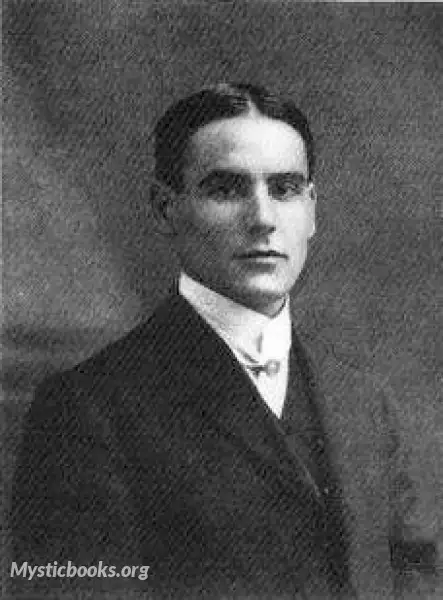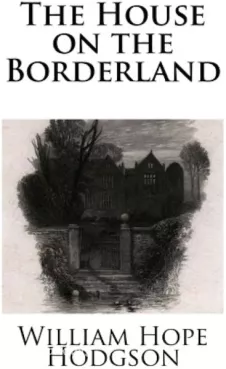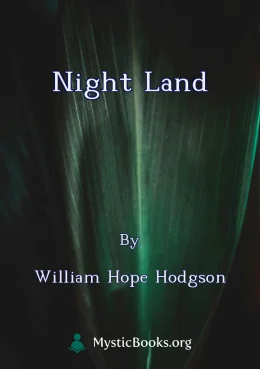
Timeline
Title
Country/Nationality
William Hope Hodgson
William Hope Hodgson was an English author. He produced a large body of work, consisting of essays, short fiction, and novels, spanning several overlapping genres including horror, fantastic fiction, and science fiction. Hodgson used his experiences at sea to lend authentic detail to his short horror stories, many of which are set on the ocean, including his series of linked tales forming the "Sargasso Sea Stories". His novels, such as The House on the Borderland (1908) and The Night Land (1912), feature more cosmic themes, but several of his novels also focus on horrors associated with the sea. Early in his writing career Hodgson dedicated effort to poetry, although few of his poems were published during his lifetime. He also attracted some notice as a photographer and achieved renown as a bodybuilder. He died in World War I at age 40.
Hodgson was born in the hamlet of Blackmore End near Braintree in Essex, the son of the Reverend Samuel Hodgson, an Anglican priest, and Lissie Sarah Brown.
Hodgson ran away from his boarding school at age 13, in an effort to become a sailor. He was caught and returned to his family, but eventually received his father's permission to be apprenticed as a cabin boy and began a four-year apprenticeship in 1891. Hodgson's father died shortly thereafter, of throat cancer, leaving the family impoverished; while William was away, the family subsisted largely on charity. After his apprenticeship ended in 1895, Hodgson began two years of study in Liverpool and was then able to pass the tests and receive his mate's certificate; he then began several more years as a sailor.
While away at sea, in addition to his exercises with weights and with a punching bag, Hodgson also practised his photography, taking photographs of aurora borealis, cyclones, lightning, sharks, and the maggots that infested the food given to sailors. He also built up a stamp collection, practised his marksmanship while hunting, and kept journals of his experiences at sea. In November 1898, he was awarded the Royal Humane Society medal for heroism for saving another sailor who, in March of the same year, had fallen from the topmast into the sea in shark-infested waters off the coast of New Zealand.
In 1899, at age 22, he opened a School of Physical Culture in Ainsworth Street, Blackburn, England, as "the inventor and teacher of a system that will cure indigestion". The School offered tailored exercise regimes for personal training. Among his customers were members of the Blackburn police force. In 1902, Hodgson himself appeared on stage with handcuffs and other restraining devices supplied by the Blackburn police department and applied the restraints to Harry Houdini, who had previously escaped from the Blackburn jail. His behavior towards Houdini generated controversy; the escape artist had some difficulty removing his restraints, complaining that Hodgson had deliberately injured him and jammed the locks of his handcuffs.
he wrote a number of poems, only a handful were published during his lifetime; several, such as "Madre Mia" (1907), appeared as dedications to his novels. Apparently cynical about the prospects of publishing his poetry, in 1906 he published an article in The Author magazine, suggesting that poets could earn money by writing inscriptions for tombstones. Many of his poems were published by his widow in two posthumous collections, but some 48 poems were not published until their appearance in the collection The Lost Poetry of William Hope Hodgson
Hodgson's first short story was "The Goddess of Death" (1904), in which he utilised a statue of Flora which stood in Corporation Park, Blackburn, as the focus of a tale in which a Hindu statue, seized from an Indian temple, stood in a small English town. The statue comes alive to take its revenge on the people who stole it. The Royal Magazine published the story in April 1904.
In 1906, the American magazine The Monthly Story Magazine published "From the Tideless Sea", the first of Hodgson's Sargasso Sea stories. Hodgson continued to sell stories to American magazines as well as British magazines for the remainder of his career, carefully managing the rights to his work in order to maximize his remuneration.
In 1912, Hodgson married Betty Farnworth, known also as Bessie, a girl from Cheadle Hulme and a staff member who wrote the "agony" column for the women's magazine Home Notes. Both were 35. She gave up her job after they married on 26 February 1913, in the London borough of Kensington. They moved to the south of France and took up residence there, owing in part to the low cost of living. Hodgson began a work entitled "Captain Dang (An account of certain peculiar and somewhat memorable adventures)" and continued to publish stories in multiple genres, although financial security continued to elude him. When war broke out in Europe, the Hodgsons returned to England.
Hodgson joined the University of London's Officers' Training Corps. Refusing to have anything to do with the sea despite his experience and Third Mate's certificate, he received a commission as a lieutenant in the Royal Artillery. In 1916, he was thrown from a horse and suffered a broken jaw and a serious head injury; he received a mandatory discharge, and returned to writing.
Refusing to remain on the sidelines, Hodgson recovered sufficiently to re-enlist. His published articles and stories from the time reflect his experience in war. He was killed by the direct impact of an artillery shell at the Fourth Battle of Ypres in April 1918; sources suggest either the 17th or 19th. He was eulogized in The Times on 2 May 1918. The American magazine Adventure, to which Hodgson had contributed fiction, also ran an obituary which reprinted a clipping from his widow, describing how Hodgson led a group of NCOs to safety under heavy fire.
Books by William Hope Hodgson

The Ghost Pirates
The Ghost Pirates is a powerful account of a doomed and haunted ship on its last voyage, and of the terrible sea-devils (of quasi-human aspect, and perhaps the spirits of bygone buccaneers) that besiege it and finally drag it down to an unknown fate....

The House on the Borderland
Deep within the remote and desolate moors, lies a house shrouded in enigmatic darkness, where reality and the supernatural intertwine in a relentless battle for the human soul. Description: In "The House on the Borderland," the timeless masterpiece b...

Carnacki, the Ghost Finder
Carnacki, the Ghost Finder is a collection of supernatural detective stories featuring the titular character, Thomas Carnacki. Carnacki is a brilliant investigator with a deep knowledge of the occult, and he uses his skills to solve cases involving g...

Night Land
Set in a distant future where the sun has died, leaving the Earth shrouded in eternal darkness, "Night Land" follows a group of survivors who have taken refuge in a massive metal pyramid called the Last Redoubt. The pyramid, powered by an ancient sou...